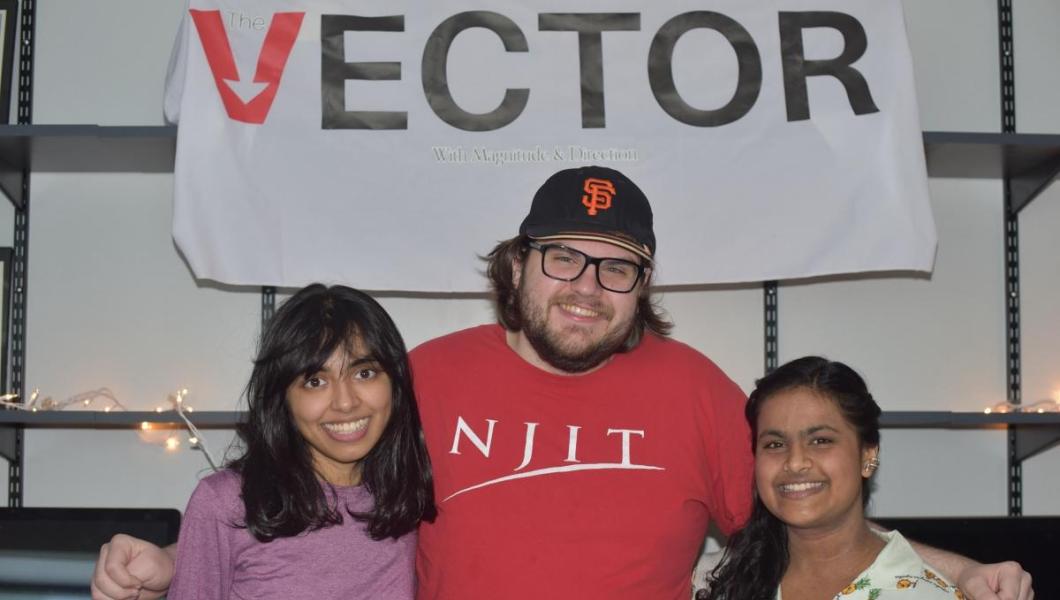Alumna Tessy Ritchie on Shaping the MedTech Industry with the FDA

Since graduating from NJIT in 2012 with a B.S. in chemistry, Tessy Ritchie has found success as a chemist, recently taking a leading role in shaping the future of public health and booming medical technology industry expected to reach nearly $580 billion by the end of 2023.
This year, Ritchie was appointed as a lead reviewer in the FDA’s Office of Surgical and Infection Control Devices after previously serving as Chief Chemist at the United States Military Academy at West Point, where she researched topics such as the chemical evolution of gunpowder, quantum dot-doped electrospun polymer fibers used as vapor sensors to help soldiers detect explosives on the battlefield, and more.
Ritchie now reviews cutting-edge technologies — from advanced wound products, complex aesthetic devices, and innovative surgical technologies which can solve public health issues — to ensure they meet FDA standards for safety.
How did NJIT nfluence your research interests and career as a chemist?
My time at NJIT played a key role when I was deciding what topic I wanted to pursue during my Ph.D. There, I participated in two internships at Infineum as well as Procter & Gamble, where I helped formulate a new mascara for Cover Girl cosmetics. The opportunity enabled me to see a consumer product develop through all its stages. These internships also gave me exposure to polymeric materials, and my interest in the field grew. As a result, I decided to choose a topic in polymers for my doctorate.
What drew you to your current role with the FDA?
I am a Chemist and Lead Reviewer on the Plastic Surgery Skin and Wound Devices team in the Center for Devices and Radiological Health. What drew me to this role was that I’d be able to have a positive impact in the science community and for the public, through the review of different emerging technologies.
What does your role entail?
Our team looks at a variety of devices including wound dressings, surgical meshes and dermal fillers. Depending on the device we may have to look at device classification, whether a clinical trial is necessary, or even product jurisdiction issues. Our team runs into combination product submissions frequently. Combination products are one in which a drug or biologic is being added to the device and sometimes we must make decisions on what is the primary mode of action — the drug/biologic or the medical device. This can affect which center is supposed to lead the review. All these decisions can play a role in the time it takes devices to come to market and what can and cannot be advertised before coming to market.
What other ways does your office help ensure public health and safety?
The bulk of my work is in the pre-market space, but I have had the opportunity to do some post-market work as well. This can include looking into allegations, complaints, or providing feedback as a subject matter expert for other agencies within the federal government who are also working to keep the public safe from the illegal sale and distribution of unapproved or uncleared medical devices.
Something I thought was interesting and did not know before working at the FDA is that anyone can file a complaint of issues, illness or injury that has occurred from the use of any product regulated by the FDA. Consumers should know that these complaints are taken seriously and that they should feel empowered to speak up through these avenues because it can make a difference!
What are some of the biggest challenges of what your team deals with today, and how are you addressing them?
We are faced with challenging scientific and regulatory questions every day. Since it is a common goal for all stakeholders to want safe and effective products to get to market efficiently, we work based on the “least burdensome” approach. It takes collaboration from both sides, the FDA and the companies (sponsors), in order to think critically about the minimum amount of information a evidence needed to get products to market that are both safe and effective to support patients and advance public health.
One method to doing this is to leverage the power of real-world data. There are vast amounts of information that have already been collected through electronic health records, case-studies, billing data, and product and disease registries.
How do you see the medical device industry evolving in the future, and do you think the review process will need to change with it?
There are many innovations happening in the realm of artificial intelligence (AI) and machine learning (ML). FDA’s commitment to device innovation and protecting public health depends on providing patients and health care providers with timely access to medical devices while maintaining FDA’s rigorous standards for safety and effectiveness.
There may be ways that AI & ML can be used in conjunction with real world data to help sponsors provide the evidence needed in their pre-market submissions that aligns with the “least burdensome” approach. Although, there may be concern in how to safeguard AI and ML technologies, I am excited to see how this development can safely be integrated in the device industry throughout my career.
The opinions expressed herein are those of the individual and not necessarily representative of those of the Food and Drug Administration (FDA), Department of Health & Human Services (HHS), or U.S. Government.

